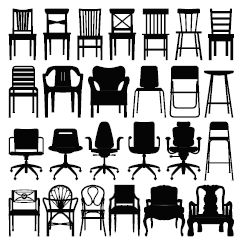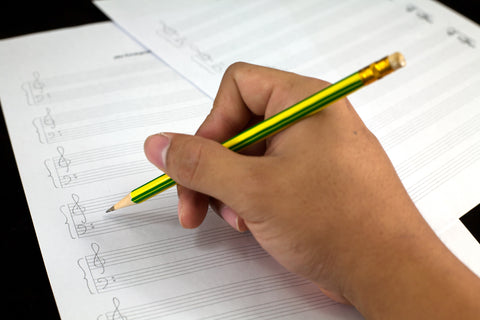
The Chairs by Eugene Ionesco
£14.95
Studying post-1900 texts at A level can sometimes be a little tedious, as with limited exam board choices students often do not get a chance to study exciting plays that challenge and expand their theatrical knowledge. This is why, when given the choice of texts from the WJEC post-1900 set list at AS, I chose Eugène Ionesco’s absurd, farcical and simply wonderful play The Chairs at AS level.
The aim of this scheme of work is for students to explore and understand The Chairs through practical class work and exploration of acting challenges, directing opportunities and stage design in order to answer the written question on the DA2 paper. The intention is that students will learn not only the historical and social context of the play and its author, but that students will delve into practical work with a view to applying this to their written paper. The title of the DA2 unit is ‘Text in Performance’ and students must understand that this paper is asking them to apply their practical knowledge to a written question. Yes, they must understand the theatrical context and original performance conditions, but this must all be with relevance to the question which is based on the ability to understand how to interpret the chosen extract in performance.
This scheme is aimed at AS level students who are required to answer a post-1900 set text question in section B of the DA2 paper. Although it is written with the WJEC DA2 exam in mind, it can easily be applied to any exam board that requires students to answer a written paper on this text. When students first delve into this text I usually get two polar opposite responses. My students either love it immediately and embrace the absurd genre, or their first reaction is to hate it as they don’t understand the point. Often students at AS have had very limited exposure to non-naturalistic texts and the idea of being able to understand and interpret an absurdist text can frighten them. They need to learn, not only the amazing variety of approaches they can take with this text, but that they can use all of their practical experience from DA1 and apply it in this exam. Their experience of the practical exam earlier in the course will help them to think about the challenges of approaching this seemingly bizarre text in a fresh and exciting way. They will also start to think about how sections can be directed and incorporate new ways of approaching design for the first time. This scheme has been written to show that Ionesco’s text looks at questions that remain unanswered and it is their job to interpret the play in their own way in order to make meaning out of the seemingly meaningless text.
Often the most challenging thing that AS level students face when starting to study a text, is how to write an exam answer that is rooted in their practical exploration of the characters in the text and the approach to direction and design of the set. Students often forget all about the work they did in class, or in their previous practical exams and do not reference this in their answers. The work done on DA1 is linked to the expectation in DA2. Students also often think that they must stuff their questions full of historical facts and have not thought about how to weave in theory, practical work and their own interpretations.
This scheme uses the Penguin Classics edition of the text, translated by Donald Watson. This is the edition set by the WJEC. It is a compilation text with Rhinoceros and The Lesson. In this scheme I have set reading homework from the Calder Publications book From Desire to Godot by Ruby Cohn and from the Methuen edition of Theatre of the Absurd by Martin Esslin. I have also set chapter reading homework from EhD’s drama resource Understanding Modern Drama Movements. This booklet is purchasable from their website.
By the end of this scheme of work, students will have the ability to answer an acting, directing or design question from section B of the DA2 paper with specific reference to their practical skills. I would suggest you set aside about 1-2 hours’ worth of lesson time reading the text with your class before starting the scheme of work, as it benefits from being read out loud and you are therefore able to explain points as you go along. As it is not a very long text it should only take you a few lessons to read.
Number of lessons: 10




